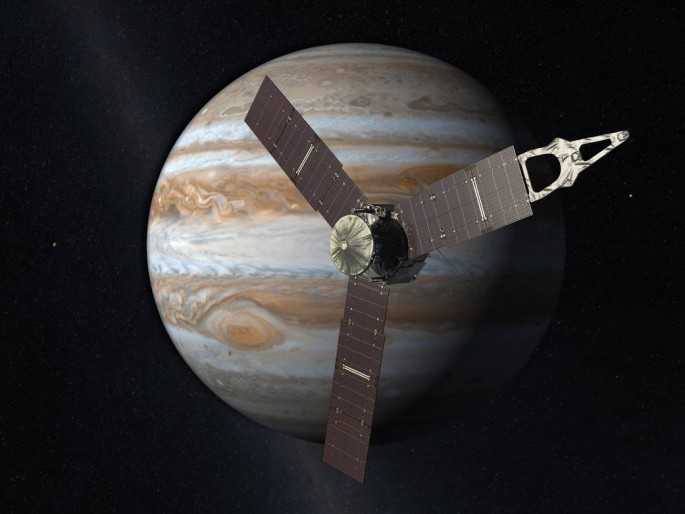NASA just announced that the Juno spacecraft has officially entered Jupiter today and is now firmly placed into orbit. Juno was launched in 2011, as it recently slowed down firing its rocket engines in order to be captured by Jupiter's gravitational forces, for its initial approach last week.
The spacecraft just transmitted a sequence of tones, that confirmed to the Juno mission team that the braking maneuver has been executed as planned. The radio messages officially confirmed Juno's safe insertion into orbit as NASA ground mission control in Pasadena, California cheered on.
For this Jupiter mission, scientists will investigate the planet's deep interior using the onboard suite of scientific instruments on the probe. New findings will finally be able to unravel how this gas giant formed some 4.5 billion years ago.
Prior to this successful entry into Jupiter's vicinity, mission engineers have already warned that firing Juno's engines will be dangerous, since no other spacecraft has entered or even arrived up close, due to the planet's powerful radiation belts that can destroy electronics without any protection.
Orbital insertion of the probe will expose the spacecraft to dangerous radiation emitted by Jupiter, that is said to be equivalent of a million dental X-rays. Fortunately, Juno is protected by titanium shields, in addition to a smoother than usual, 35 minute long rocket burn.
Dangerous radiation exposure aside, the probe is now underway preparing its instruments to scan and detect anything that lies below the surface of Jupiter.
This orbital insertion has placed Juno into an elliptical orbit of 53 days around Jupiter. During the middle of October, a second rocket burn will be carried out to make its orbit smaller, into 14 days where data collecting will finally commence.
During data gathering, the probe will complete repeat passes of the planet, at about a few thousand kilometers from its opaque cloudtops. During each closest approach, Juno will be able to whip out its eight remote sensing instruments including its camera to pierce into the many, thick and gaseous, atmospheric layers, to measure and determine the composition of the planet, including temperatures and even movement.
Apart from these, scientists prioritize the detection of oxygen and its abundance inside the planet, which can link to the presence of water.
Juno will obtain observations and measurements until February 2018, if the probe does not sustain any significant radiation damages, as camera operations is expected to degrade in just a few months.



























